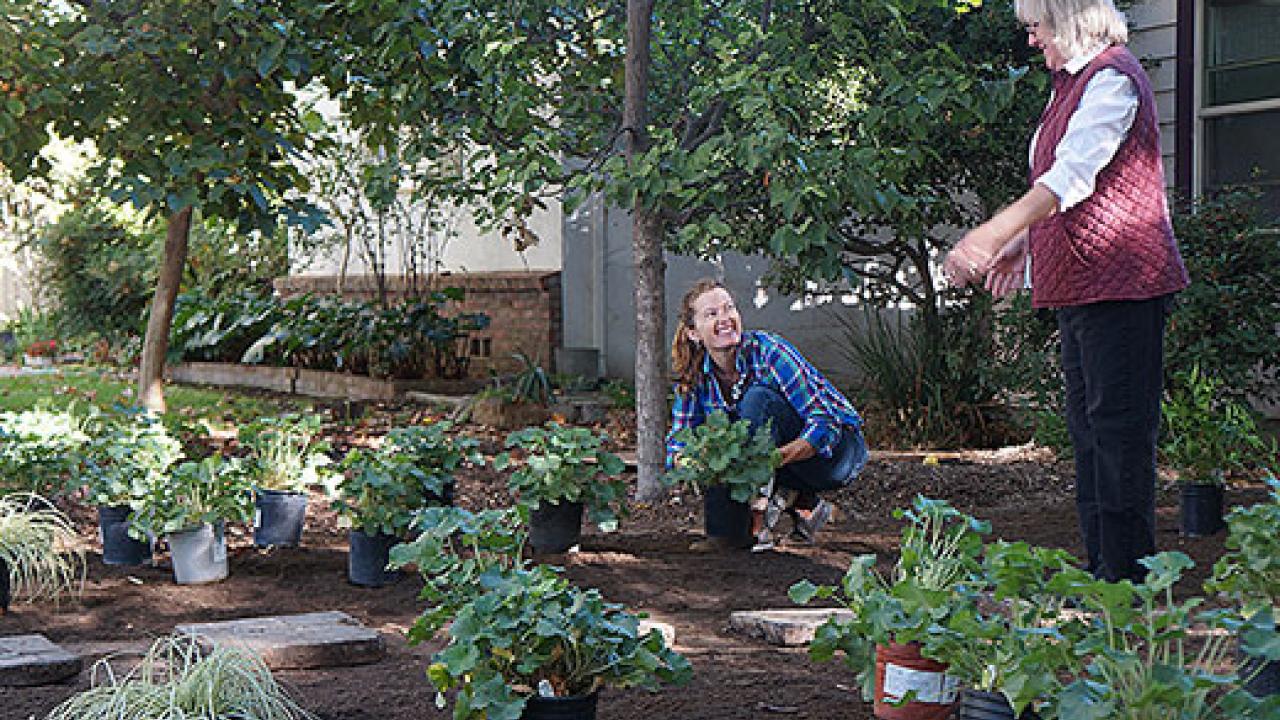[Editor's note: The final Arboretum Plant Sale for this season will be held Saturday, Nov. 14 from 9 a.m. to 1 p.m. at the UC Davis Arboretum Teaching Nursery on Garrod Drive in Davis.]
If you allowed your lawn to die this summer to save water, now is the time to replace it with water-wise landscape plants, say landscape specialists from the University of California, Davis. Autumn, with its cooler weather and anticipated winter rains, is the best time in most areas of California for landscape planting.
“Fall is the best time of year to plant,” said Loren Oki, a statewide Cooperative Extension landscape specialist in the Department of Plant Sciences at UC Davis. “Many people think spring is the optimum time for landscape planting in California, but it’s better to plant in fall when there is more soil moisture and mild temperatures for several months. This allows roots to grow and expand before summer heat and dry conditions occur, which is stressful for new plants.”
The key to landscape water conservation
One consideration in plant selection is the water needs of the plants.
“On average, half of residential water use in California is for landscapes,” said Dave Fujino, director of the California Center for Urban Horticulture at UC Davis. “Managing your irrigation system is one of the keys to landscape water conservation.”
Fujino advises doing some up-front work to help save water: Check your system for leaks, use matching sprinkler nozzles (manufacturer and type), ensure that irrigation water pressure matches sprinkler manufacturer’s nozzle/emitter recommendation, and learn how to program your irrigation controller.
Specific planting recommendations vary based on individual tastes, budgets and climates, but basic steps include:
- Select drought-tolerant plants that will do well in your garden. Consider soil type, water needs, light and shade factors, and winter and summer temperature extremes.
- Choose plants that meet your gardening needs. For instance, perhaps you want plants that attract birds, bees or other wildlife. Your retail nursery, local Master Gardeners, or the websites listed below can provide information.
- Group plants according to water and other microclimate needs.
Arboretum All-Stars
One of the best starting places for selecting water-wise plants is the Arboretum All-Stars website developed by the Arboretum and Public Garden at UC Davis.
“Arboretum All-Stars are 100 plants we have identified which do well in the hot interior of California and tolerate the boron and bicarbonates in water that make it hard to grow some plants,” said Ellen Zagory, public horticulture director at the UC Davis Arboretum. “There is a wide selection of plants that grow well in California heat and are low water users.”
Zagory stresses five steps for establishing new plants in drought-tolerant gardens:
- Plant in the fall when the weather cools and the rains are expected.
- Water deeply and frequently for the first summer season.
- Distribute irrigation water evenly.
- Reduce irrigation frequency the second summer.
- Cover the soil with organic mulch to reduce evapotranspiration.
The All-Star plants have been field tested by Oki, San Joaquin County Cooperative Extension advisor Karrie Reid, and other researchers. Fujino has worked with wholesale and retail nurseries in California to make the plants available to the public.
Many of the plants are also available at the UC Davis Arboretum’s fall and spring plant sales. This season’s final sale will be held Saturday, Nov. 14 from 9 a.m. to 1 p.m.
In addition to the Arboretum All-Stars, the arboretum has customized plant lists, such as “The New Front Yard,” featuring region-appropriate plants that save water and support wildlife, and “Durable Delights,” which are tough and heat-tolerant plants for sustainable landscapes.
“Before winter sets in and soils are too wet for planting, enjoy the respite from summer heat and start planting your drought-tolerant garden,” Oki said.
Media Resources
Ann Filmer, Plant Sciences, 530-754-6788, afilmer@ucdavis.edu
Lorence Oki, Plant Sciences, (530) 754-4135, lroki@ucdavis.edu
David Fujino, California Center for Urban Horticulture, UC Davis, (530) 754-7739, dwfujino@ucdavis.edu
Ellen Zagory, UC Davis Arboretum and Public Garden, (530) 752-3145, emzagory@ucdavis.edu
Kat Kerlin, Research news (emphasis on environmental sciences), 530-750-9195, kekerlin@ucdavis.edu
